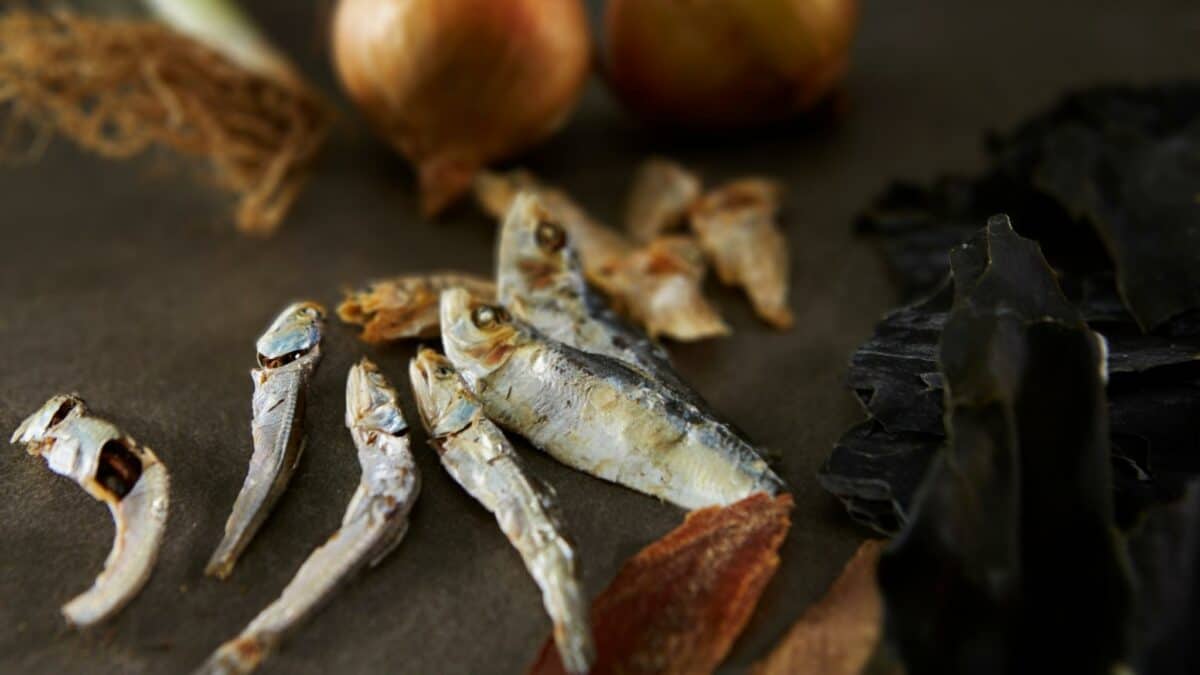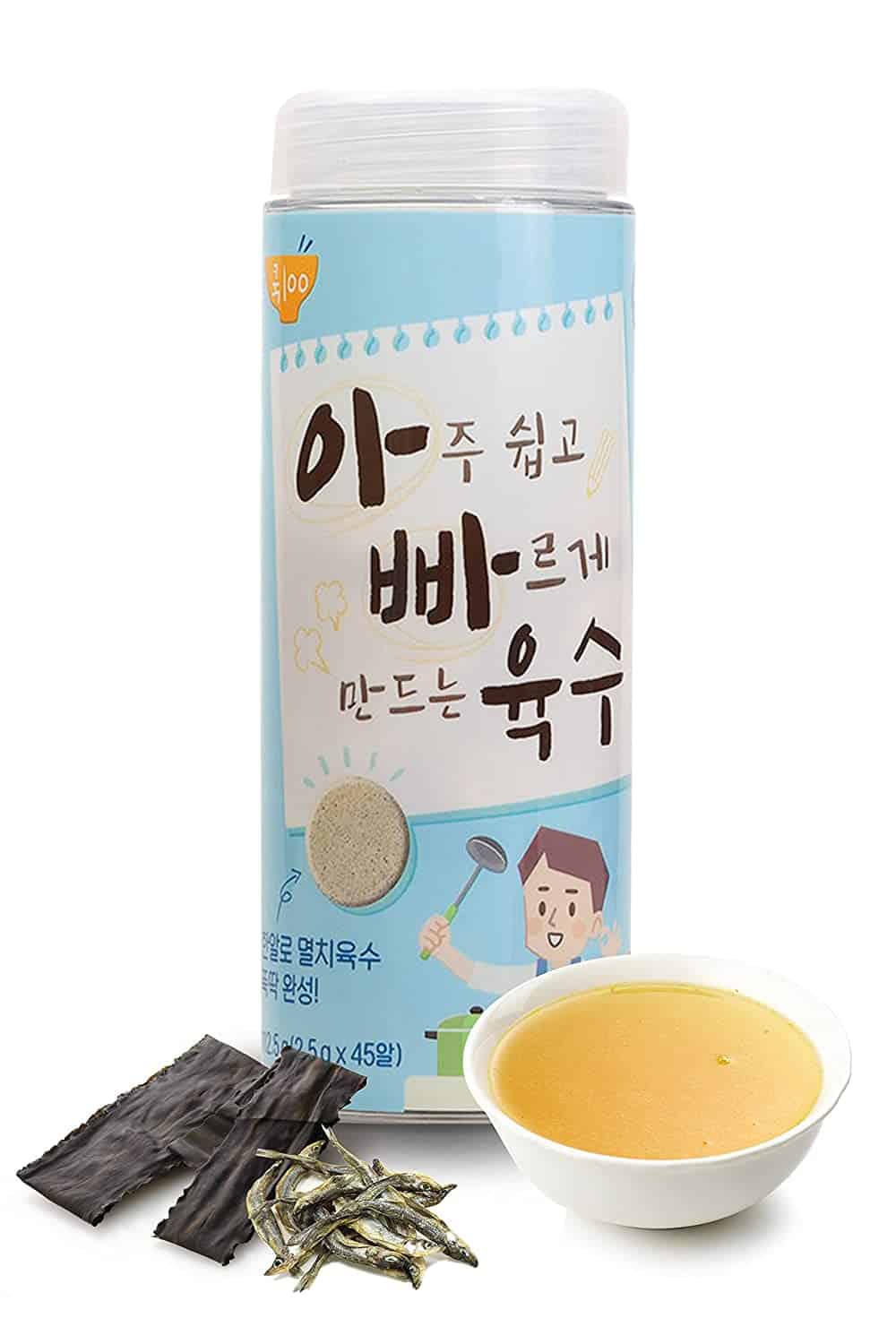Anchovy Broth (Myeolchi Yuksu, 멸치육수): What Is It?
Anchovy broth is broth made of entire anchovies, boiled down. It also includes other ingredients like onion, garlic, dried mushrooms, and even some radish.


Check out our new cookbook
Bitemybun's family recipes with complete meal planner and recipe guide.
Try it out for free with Kindle Unlimited:
Read for freeIn this post we'll cover:
- 1 What is anchovy broth?
- 2 What does anchovy broth taste like?
- 3 How do you use anchovy broth?
- 4 How is anchovy broth made?
- 5 Best anchovy broth to buy
- 6 What’s the origin of anchovy broth?
- 7 How long does anchovy broth last?
- 8 What’s the difference between anchovy broth and dashi?
- 9 What’s the difference between anchovy broth and fish sauce?
- 10 Is anchovy broth healthy?
- 11 Conclusion
What is anchovy broth?
Anchovy broth or Korean Myeolchi Yuksu (멸치육수) is a type of fish stock that is commonly used in Korean cuisine. Unlike its Japanese counterpart, dashi, which uses bonito flakes as its base, anchovy stock uses whole anchovies as its main ingredient. This results in a savory and umami-packed broth that is even fishier in flavor.
What does anchovy broth taste like?
As you might expect, anchovy broth has a strong fishy flavor. However, this is balanced out by the savory and umami notes imparted by the anchovies. The end result is a delicious and versatile broth that can be used in a variety of dishes.
How do you use anchovy broth?
Anchovy broth can be used in any dish where you would normally use a fish or vegetable stock. It is commonly used as a base for soups and stews, or as a flavor enhancer for sauces and marinades. Additionally, anchovy broth can be used to add depth of flavor to rice and noodle dishes.
How is anchovy broth made?
Anchovy broth is made by simmering whole anchovies in water. This extracts all of the flavor from the anchovies, resulting in a concentrated and intensely flavored broth. Once the broth has been simmered, it can be strained and used as desired.
Gukmulyong Maleun Myeolchi dried anchovies are used for making the broth where Gukmul means soup, Yong for use in, Maleun dried, and Myeolchi anchovies. So “dried anchovies for use in soup”.
Best anchovy broth to buy

The tablets are very easy to use. Add 1 tablet per 8.45oz (250ml) of water and in just 3 minutes you’ll have a great broth base.
The best thing is that it’s made without any artificial additives. Just 10 natural ingredients from anchovy and kombu to radish and leek.
Some say it tastes just like mother’s homemade Myeolchi Yuksu.
What’s the origin of anchovy broth?
The origin of anchovy broth can be traced back to Korea, where it is a traditional ingredient in many dishes. Anchovy broth has been used in Korean cooking for centuries and remains an essential part of the cuisine today.
How long does anchovy broth last?
Anchovy broth will last for up to 2 days when stored in the fridge, or up to 6 months when frozen.
What’s the difference between anchovy broth and dashi?
The biggest difference between anchovy broth and dashi is the type of fish used to make each one. Anchovy broth is made with whole anchovies, while dashi is made with bonito flakes. This results in a slightly different flavor for each broth. Additionally, anchovy broth is typically darker in color than dashi.
What’s the difference between anchovy broth and fish sauce?
Fish sauce is made from fermented fish, while anchovy broth is made by simmering whole anchovies in water. This results in a different flavor for each one. Fish sauce is saltier and more pungent than anchovy broth, which has a more subtle flavor. Additionally, fish sauce is typically used as a condiment, while anchovy broth is used as a base for soups and stews or as a flavor enhancer for other dishes.
Is anchovy broth healthy?
Yes, anchovy broth is healthy. It is a good source of protein and omega-3 fatty acids, and it is low in calories. Additionally, anchovy broth contains no carbohydrates or sugar.
Conclusion
Anchovy broth is great to cook with and doesn’t overpower dishes so you can, and it is, used in many dishes.
Check out our new cookbook
Bitemybun's family recipes with complete meal planner and recipe guide.
Try it out for free with Kindle Unlimited:
Read for freeJoost Nusselder, the founder of Bite My Bun is a content marketer, dad and loves trying out new food with Japanese food at the heart of his passion, and together with his team he's been creating in-depth blog articles since 2016 to help loyal readers with recipes and cooking tips.
